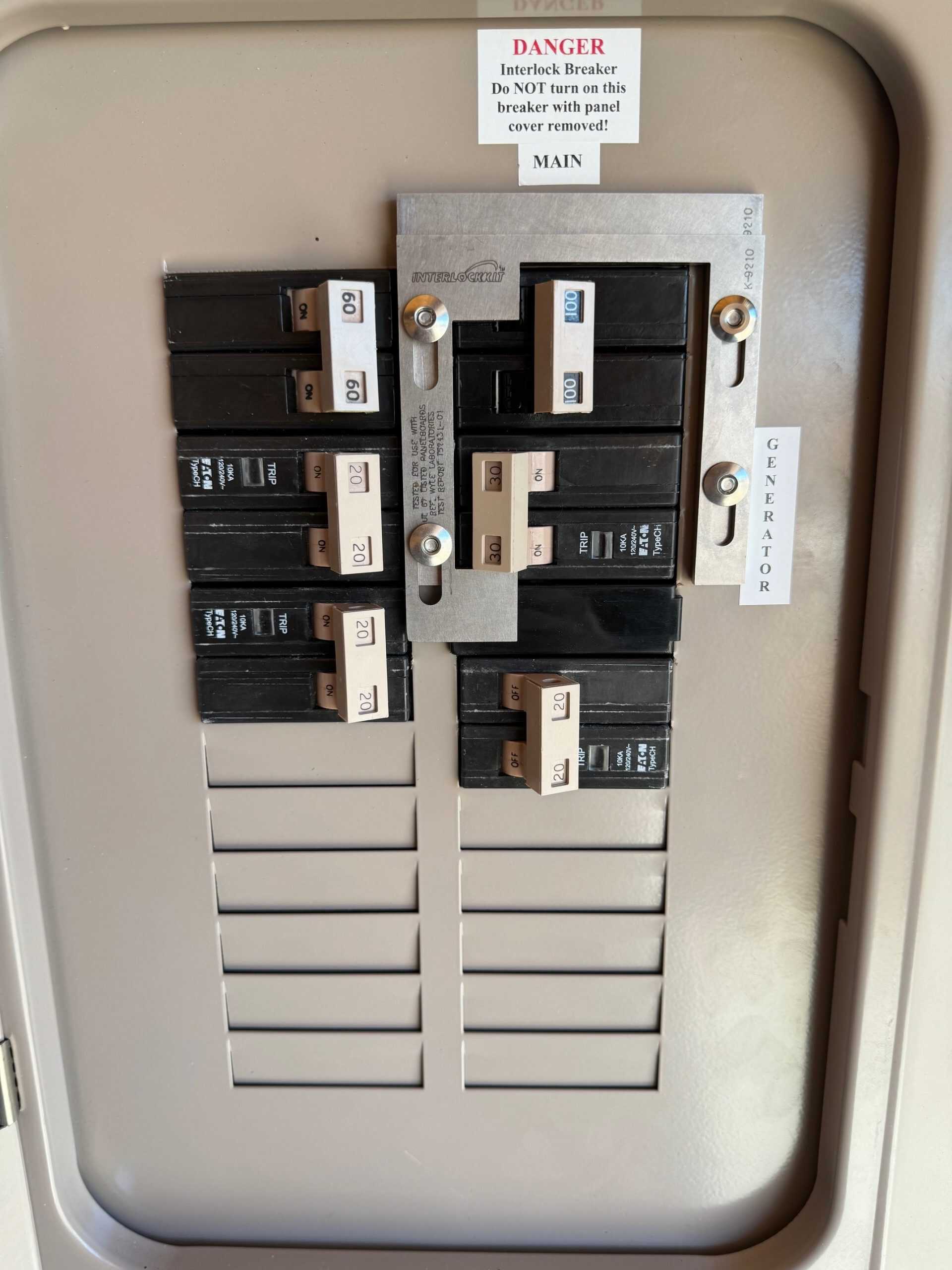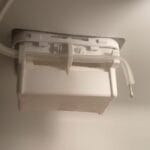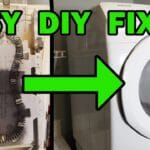Picture this: a storm knocks out the power in your neighborhood, and you’re left in the dark. But wait—your backup generator can save the day.
The question is, how do you safely switch from grid power to generator power? This is where the choice between a generator interlock and a transfer switch comes in. You might be wondering which option is best for your home, and that’s exactly what we’re here to help you discover.
When it comes to powering your home during an outage, you want reliability and safety. A generator interlock and a transfer switch both offer unique benefits, but they work differently. Do you want a solution that’s easy to install or one that offers more control? Understanding these differences will empower you to make a decision that suits your needs perfectly. By the end of this article, you’ll have a clear picture of which system will fit seamlessly into your lifestyle and budget. Let’s dive into the nitty-gritty of generator interlocks versus transfer switches so you can keep your home running smoothly no matter what Mother Nature throws your way.
Generator Interlock Basics
When it comes to ensuring your home remains powered during outages, understanding the basics of generator interlocks can be essential. A generator interlock is a device that allows you to connect a portable generator to your home’s electrical system safely. This system is often considered a simpler and cost-effective alternative to a transfer switch. Let’s dive into what makes the generator interlock tick and how it can be a game-changer for your backup power strategy.
What Is A Generator Interlock?
An interlock kit is a manual device installed in your electrical panel. It ensures that your generator and main power supply cannot operate simultaneously. This prevents backfeeding, which can be dangerous for utility workers repairing power lines.
Think of it as a safety gate. You have to move the interlock to switch from the utility to generator power. This manual operation adds a layer of safety and control.
Installing an interlock kit requires some electrical know-how. Typically, a professional electrician should handle the installation to ensure safety and compliance with local codes.
The kit is mounted onto your existing breaker panel. It doesn’t require a separate panel, unlike a transfer switch, making it an affordable option.
Cost Considerations
Generator interlocks are generally more budget-friendly than transfer switches. They typically cost between $50 to $150 for the kit itself.
You might spend a few hundred dollars more on installation. But it’s still cheaper than a transfer switch setup, which can run into thousands.
With a generator interlock, you have direct control over your home’s electrical system. You must manually switch between utility and generator power, reducing the risk of accidental backfeeding.
This control can be reassuring, especially during a storm when power fluctuations are common.
Personal Experience
One winter, my family faced a severe snowstorm that knocked out power for days. We had a generator but no interlock kit. Running extension cords through windows was a hassle.
Installing a generator interlock transformed our approach to power outages. It was easy to use and saved us from the chaos of tangled cords. Have you ever found yourself juggling cords during an outage?
Understanding generator interlocks can empower you to make informed decisions about your backup power solutions. Do you think it’s the right fit for your home?

Credit: www.youtube.com
Transfer Switch Fundamentals
Understanding transfer switch fundamentals is crucial for anyone using generators. Transfer switches play a vital role in safely connecting a generator to your home’s electrical system. They ensure your home receives power during outages without manual intervention. Let’s explore how they work and their advantages.
What Is A Transfer Switch?
A transfer switch is an electrical device. It transfers electrical load between two power sources. Typically, the main power source and a generator. This ensures your home remains powered during outages.
How Transfer Switches Operate
Transfer switches automatically detect power loss. They switch your home’s power source to the generator. This process happens quickly, minimizing downtime.
Types Of Transfer Switches
There are two main types: manual and automatic. Manual switches require user intervention. Automatic switches operate without human input. Each type offers unique benefits.
Benefits Of Using Transfer Switches
Transfer switches offer several advantages. They prevent dangerous back-feeding. This protects utility workers and your appliances. They also simplify generator use, enhancing convenience.
Installation And Safety Considerations
Professional installation is recommended for transfer switches. This ensures safety and compliance with local codes. Improper installation can lead to hazards.
Installation Process
The installation process is crucial for ensuring safe and efficient operation of generator systems. Whether you choose a generator interlock or a transfer switch, each requires specific steps. Understanding these can help you decide which best fits your needs.
Interlock Installation
Installing a generator interlock involves working with your existing electrical panel. This method connects directly to your home’s circuit breaker. It allows safe switching between grid power and generator power. First, ensure the main panel is compatible. An interlock kit is usually required. This kit includes the interlock plate and necessary hardware. The installation starts by turning off the main power. Next, attach the interlock plate to the panel. Align it with the circuit breaker for the generator. This ensures no back-feeding occurs. Secure the plate with screws provided in the kit. Check the alignment carefully. Verify all connections before turning on power. This process requires basic electrical knowledge. Consider hiring a professional electrician for safety.
Transfer Switch Installation
Installing a transfer switch is a more complex task. It offers a seamless transition between power sources. Begin by selecting the right switch for your generator. Consider the wattage and number of circuits needed. The process starts with turning off the main power. The transfer switch is usually installed near the main panel. Connect the switch to the circuits you want powered by the generator. This often involves running new wiring. Mount the switch securely to the wall. Follow the manufacturer’s instructions for wiring. Each wire must be connected properly. Double-check connections to avoid issues. Test the switch operation. Ensure it transfers power without interruption. This process often requires professional installation. It guarantees safety and compliance with local codes.
Cost Comparison
Choosing the right backup power solution involves understanding costs. Both generator interlocks and transfer switches have distinct expenses. This section breaks down the costs associated with each option. Knowing these details helps in making an informed decision.
Interlock Costs
Generator interlocks are generally more affordable. They cost between $50 to $150. Professional installation adds to the expense. Expect to pay around $200 for labor. Total costs remain budget-friendly. Interlocks offer a cost-effective solution for many.
Transfer Switch Costs
Transfer switches typically cost more. Prices range from $300 to $800. Installation fees are higher due to complexity. Installers may charge $500 or more. Overall, transfer switches represent a bigger investment. They provide convenience and safety.
Safety Features
Choosing between a generator interlock and a transfer switch involves understanding safety features. Safety is a top priority when dealing with electrical systems. Both options provide unique safety benefits. Knowing these features helps in making informed decisions.
Interlock Safety
Interlock kits ensure the main breaker and generator breaker cannot run simultaneously. This prevents back-feeding electricity into the grid. Back-feeding poses risks to utility workers and home appliances. Interlocks are mechanical devices, reducing chances of electrical failures. They are simple, yet effective, in protecting your home.
Transfer Switch Safety
Transfer switches offer a more automated safety feature. They isolate the generator from the utility power lines. This prevents accidental back-feeding, ensuring safety for workers. Transfer switches can handle more circuits, offering flexibility. They also reduce manual errors, as the switch controls the power source change. This leads to a safer and more reliable power management system.

Credit: www.ehmanelectric.com
Ease Of Use
Choosing between a generator interlock and a transfer switch involves understanding ease of use. Generator interlocks offer a simple setup, often more budget-friendly. Transfer switches provide automatic power transfer, making operation straightforward during power outages. Both options ensure seamless electricity flow, enhancing convenience and safety.
When you’re considering backup power solutions for your home, understanding the ease of use between a generator interlock and a transfer switch is crucial. You want a system that can be easily managed during a power outage, especially when the pressure is on. Let’s break down how each option operates and what you can expect in terms of user-friendliness.Operating An Interlock
An interlock system is typically more straightforward to set up. It connects directly to your main electrical panel, using a sliding plate that allows you to switch between utility and generator power. To operate, you manually adjust the interlock plate, ensuring the main breaker is off before starting your generator. This manual process can feel like second nature once you’ve done it a few times. However, it does require some familiarity with your electrical panel. If you’re comfortable with a bit of DIY, an interlock might be just what you need. Have you ever wished for a simple solution that doesn’t involve complex rewiring or additional boxes?Using A Transfer Switch
A transfer switch, on the other hand, tends to be more intuitive for those who prefer a plug-and-play experience. It involves a separate panel that automatically or manually switches your power source from the grid to the generator. Once installed, using a transfer switch can be as easy as flipping a switch or pressing a button. It’s designed for those who want to minimize hassle during an outage. Imagine the peace of mind knowing that your system kicks into gear with minimal intervention. Would you appreciate a solution that practically runs itself? Both systems have their merits, but your choice depends on how involved you want to be in the process. If you thrive on simplicity, a transfer switch might be your go-to. But if you enjoy a hands-on approach, an interlock could be more your speed.Compatibility With Generators
Exploring generator interlocks and transfer switches? Both enhance generator compatibility but differ in operation. Interlocks manually manage power flow between the generator and main panel, while transfer switches automatically switch power sources. Understanding these differences helps in choosing the right system for seamless backup power.
When you’re considering a backup power solution for your home, understanding how your generator interacts with different systems is crucial. Compatibility plays a vital role in ensuring a smooth transition during a power outage. Whether you’re leaning towards a generator interlock or a transfer switch, knowing which one suits your generator setup is essential for maintaining safety and efficiency.Interlock Compatibility
An interlock kit is designed to work directly with your existing electrical panel. It provides a cost-effective way to connect your generator to your home’s wiring. However, not all electrical panels are compatible with every interlock kit. Before purchasing an interlock, check the model of your breaker panel. Some panels have specific interlock kits designed for them. If your panel is not compatible, you might need to upgrade or consider an alternative solution. It’s also important to ensure that your generator matches the power requirements of your home. Interlocks typically work with portable generators. So, if you have a standby generator, you might want to look at other options.Transfer Switch Compatibility
Transfer switches offer a seamless transition between utility power and generator power. They are generally more versatile than interlocks. However, they come in different types, so compatibility varies. Manual transfer switches require you to physically switch power sources. They’re often used with portable generators and can be more flexible with various models. Automatic transfer switches are designed for standby generators. They need to match the generator’s capacity and specifications. A mismatch could lead to inefficiency or even damage. Before installing a transfer switch, consult with an electrician. Ensure that both the switch and your generator are compatible. This can save you from potential headaches down the road. Consider what level of convenience you’re seeking. Do you prefer the automatic switch over the manual option? Your choice will impact how well your generator system meets your needs. In deciding between an interlock and a transfer switch, think about your generator’s capabilities and your personal preferences. Are you prepared to manually switch over during an outage, or do you want a more automated solution? Your decision can affect not just compatibility but also your peace of mind during a power failure.
Credit: interlockkit.com
Pros And Cons
Choosing between a generator interlock and a transfer switch involves weighing convenience against cost. Generator interlocks are budget-friendly, offering basic power management. Transfer switches provide seamless transitions but come with higher installation expenses.
When deciding between a generator interlock and a transfer switch, understanding their pros and cons is crucial. Both options have unique features. Each serves a different purpose in managing backup power. This section delves into the advantages and drawbacks of both systems, helping you make an informed decision.Interlock Pros And Cons
Interlock kits are budget-friendly. They cost less than transfer switches. Installation is straightforward and often DIY-friendly. An interlock allows for flexible circuit usage. You can power essential appliances easily. They are space-efficient, fitting into existing panels. But, they require manual operation. During an outage, you must switch circuits manually. Safety depends on proper installation. Improper setup can cause hazards. They are not suitable for all electrical panels. Compatibility issues might arise.Transfer Switch Pros And Cons
Transfer switches offer automatic operation. They switch power without manual intervention. This ensures continuous power during outages. They are safer with built-in safety features. Compatibility with most generators is high. Yet, they are more expensive. Installation might need a professional. They occupy more space than interlocks. You may need additional wiring. This adds to the complexity and cost.Choosing The Right Option
Deciding between a generator interlock and a transfer switch can be challenging. A generator interlock offers a cost-effective solution, ensuring safety by preventing back-feed. Meanwhile, a transfer switch provides seamless power transition, ideal for those seeking convenience and reliability. Choose based on your budget and power needs.
Choosing the right option between a generator interlock and a transfer switch can feel overwhelming. Each has its unique benefits, making your choice dependent on specific needs and situations. Let’s break down some key considerations to help you make an informed decision.Factors To Consider
When deciding between a generator interlock and a transfer switch, consider your budget. Interlocks are generally more cost-effective, which is ideal if you’re on a tight budget. However, transfer switches offer more convenience and automation, which might justify the higher price for some users. Evaluate your technical skills and comfort level with DIY projects. Installing an interlock may require more hands-on work and understanding of your electrical panel. If you’re not comfortable with this, a transfer switch might be the safer choice, often requiring professional installation. Think about your power needs. Are you looking to power a few essential circuits or your entire home? An interlock can be perfect for selectively powering key circuits, while a transfer switch can seamlessly handle larger loads, making it suitable for whole-home generators.Making The Decision
Reflect on your past experiences with power outages. How frequently do they occur, and how disruptive are they? If you live in an area prone to frequent outages, investing in a transfer switch might provide peace of mind and convenience. Consider future plans. Are you planning to expand your home or add more electrical appliances? A transfer switch offers scalability and ease of use for growing power demands, while an interlock might limit future expansions. Ask yourself, how much control do you want over your power management? With a transfer switch, you get automated control that kicks in without manual intervention. In contrast, an interlock gives you more manual control, which can be reassuring if you prefer to oversee the process. In the end, choosing between a generator interlock and a transfer switch boils down to balancing budget, convenience, and control. What features align most with your lifestyle and preferences? Make a choice that ensures your home stays powered and your mind stays at ease.Frequently Asked Questions
What Is A Generator Interlock Kit?
A generator interlock kit connects your generator to your home’s electrical panel. It prevents backfeeding.
How Does A Transfer Switch Work?
A transfer switch shifts power supply from grid to generator. It ensures seamless power transition.
Which Is Safer: Interlock Or Transfer Switch?
Both are safe when installed correctly. Transfer switches are often preferred for better control.
Can I Install A Generator Interlock Myself?
It’s best to hire a licensed electrician. Ensures proper installation and safety compliance.
Why Choose A Transfer Switch Over An Interlock?
Transfer switches offer automatic power switching. They provide convenience, especially during unexpected outages.
Conclusion
Choosing between a generator interlock and a transfer switch can be tough. Both have unique benefits. Interlocks are cost-effective. Transfer switches offer seamless power. Your choice depends on your needs and budget. Think about safety and convenience. A reliable backup power source matters.
Evaluate your priorities and make a smart decision. Reliable power ensures peace of mind. Always consult a professional for installation. Safety should be a priority. With the right choice, enjoy uninterrupted power. Your home stays powered, no matter the situation.




